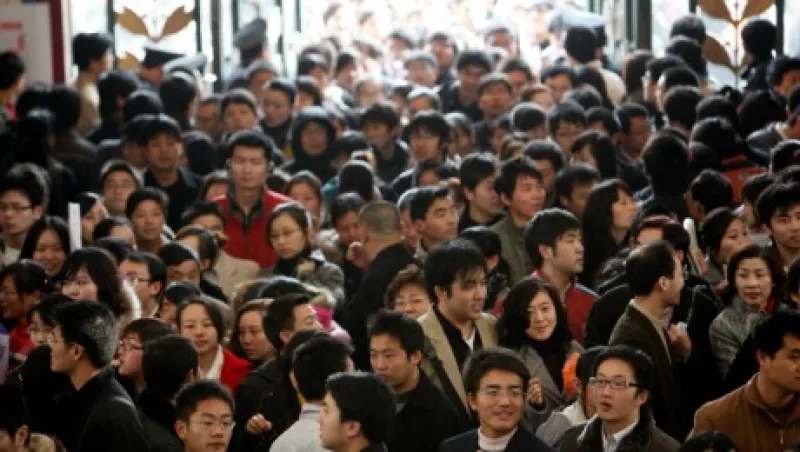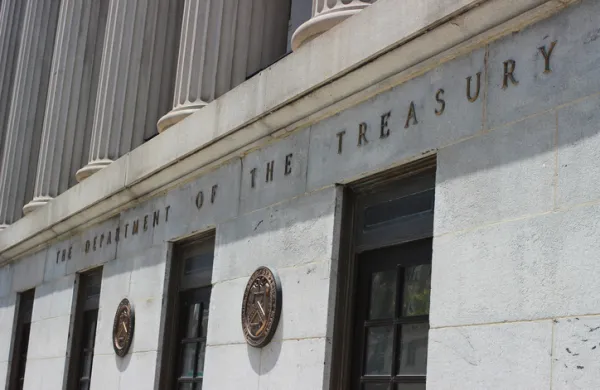A recent visit to China gives us more assurance that there is a base rate of economic growth that the government will work hard to achieve in 2016, using a variety of monetary and fiscal tools.
Our bigger conclusion, however, remains that the Chinese economy is structurally slowing, driven by disinflation, declining incremental returns, demographic headwinds and the law of large numbers. If we at KKR are right, then China needs to bring nominal lending growth more in line with nominal gross domestic product growth. The world’s second-largest economy also needs to start shifting its existing debt load away from the corporate sector and toward the consumer sector.
How these transitions unfold will have major implications not only for China but also for a world economy that now relies on China for more than one third of global GDP growth.
Overall, our time in both Beijing and Hong Kong was well spent. We walked away with what we believe are important short-term and long-term investment conclusions:
We are lifting our 2016 GDP forecast from 6.3 to 6.5 percent. This change represents the first uptick in our Chinese GDP forecast since our macro and asset allocation team was established at KKR in 2011. The primary catalyst for the increase is the government’s renewed commitment to achieving its 6.5 percent growth target via robust liquidity injections into the economy. As one might sense, the recent decision to substantially boost credit creation appears to run counter to the government’s original reform agenda of targeting a less levered, more market-based economy. Meanwhile, our inflation forecast for 2016 rises from 1.7 to 2 percent. The primary driver of the change is the aforementioned pickup in growth, which results in slightly higher core inflation.
In the long term, however, we do not think that the recent stimulus can help the Chinese economy reestablish a higher sustained growth rate. In fact, residential property and infrastructure — areas that already suffer from excess capacity in many parts of the country — were the two primary stimulants of growth during the first quarter of 2016. Including that added to these two areas, a total of 7.5 trillion yuan ($1.2 trillion) of stimulus was injected into the economy during the first quarter, which equates to 47 percent of GDP on an annualized basis, according to Goldman Sachs Group research. Not surprisingly, we view these types of initiatives as unsustainable for an economy that already has a total debt-to-GDP ratio of 245 percent.
Corporate credit growth remains outsize relative to GDP, which has implications for — among others — the country’s banks, insurers and brokers. Investors hoping for a big-bang write-off in the banking sector, however, are likely to be disappointed in the near term. From what we can tell, it’s not coming. During our visit there was quite a buzz among bank executives, investors and CEOs about the proposed introduction of debt-to-equity swaps for corporations with large amounts of outstanding loans, which could theoretically provide some form of equity capital relief for banks. Another big initiative to improve the situation in the banking sector is a program that allows debt from local government funding vehicles held by banks to be refinanced through the municipal bond market at lower rates and capital charges, as well as for longer durations. Unfortunately, we view both the debt-for-equity swap strategy and the replacement of LGFV debt with municipal debt somewhat more cautiously than does the consensus, as neither actually represents a true injection of external equity. Moreover, we still wrestle with the fact that credit is growing at a rate of more than 13 percent year-over-year, which is nearly twice the pace of nominal GDP. My colleague Frances Lim forecasts that if current trends persist, China’s debt-to-GDP will reach 300 percent or greater by 2020.
As the country’s economy undergoes a massive transition, China is no longer one moving piece. We are not talking about the transition from manufacturing toward services. In our view, this economic handoff has been somewhat overhyped. The reality is that fixed investment as a percentage of GDP is now higher than at any period in recent memory — largely because of the outsize government stimulus in recent years. Rather, we are talking about the significant transition that China’s Millennials are driving across the economy, particularly in the country’s retail, travel and leisure, consumer finance, sports, health care and wellness sectors.
To offset the slowdown in global trade and flows, China is also repositioning its export economy to take market share in higher value-added services. Some of this transition is linked to internally building a fast-follower strategy in certain sectors, but the lion’s share of executives with whom we spoke indicated that the No. 1 priority was to acquire overseas firms with customer knowledge, global supply chains, distribution networks and superior intellectual property. If we are right, then we should expect more outbound global M&A by China in the near term, as well as more global pricing cuts in the long term.
Coming to a theater near you: China Inc. Acquiring assets outside of China is clearly a major focus after the August devaluation. There is also some sound industrial logic too. There is a growing desire to shift excess capacity from the country’s domestic economy to new markets — the U.S., in particular. In addition, some CEOs with whom we spoke wanted to acquire high-end expertise across technology and health care. Finally, some Chinese businesses want to learn more about consumer behavior in developed markets, so that they can bring that expertise back home or be more prepared when the local market becomes more mature.
Over time, we see only one path forward for China’s long-term prospects: It must shift some of its debt burden away from local government and corporations and toward consumers and the central government. This process has started, but there are lots of vested interests and roadblocks along the way. If this strategy is not pursued, it will be nearly impossible for China to achieve 6 to 6.5 percent growth over the next five years, because of ongoing misallocation of resources. Simply stated, investing more in loss-making businesses creates a notable drag on productivity. As labor force growth slows further in China, productivity improvement will quickly become the only catalyst for boosting long-term growth.
Significantly, whenever China’s growth trajectory falls too far below trend, the government periodically reembraces its well-documented playbook of stimulating fixed investment to smooth growth and improve confidence. Our growing concern with this strategy is that the incremental return on credit falls each time the government restimulates the economy via rapid credit creation. We also think it is inconsistent with a currency that is being expected to trade in a narrow band. Estimates during our trip were from 0 to 3 percent depreciation in the yuan over the next 12 months.
Beyond the credit overhang, China bears will also argue that the country is now caught between ceding the low-end manufacturing activity to its Southeast Asian and African peers without the necessary increases in high-end manufacturing market share to create a seamless transition. We certainly saw examples of this squeeze happening, but we think this perspective ignores China’s huge inroads in terms of profitability and growth in some of the more value-added segments of the global economy.
Regardless of where one comes down on the China debate, this bull-versus-bear script will still take time to play out. In the interim, we think the economy will give both sides enough food for thought to keep things quite volatile well into 2017.
Henry McVey is head of macro and asset allocation at KKR in New York.
See KKR’s disclaimer.
Get more on emerging markets.






